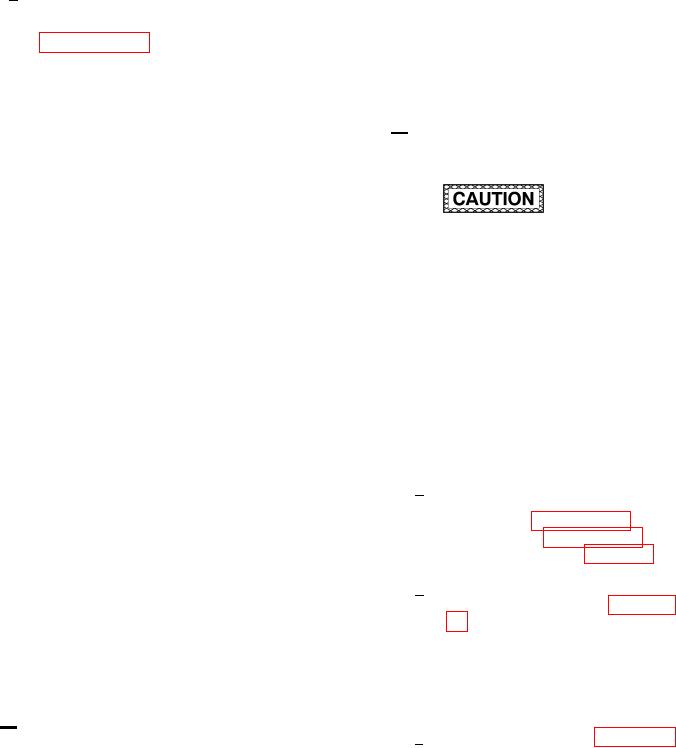
TM 1-1500-204-23-11
8
Vacuum bag the front side of the
sheet stock (plug material), Non-porous release ilm,
repair area and perform a vacuum
Nylon rod threaded (0.25 inch diameter x 12 inches
integrity test in accordance with
long), Wingnut (to it threaded rod), Nylon nuts x 4
paragraph 6-18f if vacuum integrity
(to it threaded rod), Solvent, Adhesive comb, Adhe-
does not meet requirements, reinstall
sive, Paste (See System Speciic Technical Manual),
the backside seal with new vac-
Safety equipment as required, Wiping cloth, Abrasive
uum sealant tape and bag ilm and
sheets, Carbide cutoff wheels, Marker.
repeat the test until vacuum integrity
is achieved.
2 Procedure. Follow these steps to per-
form the method 1, one side access technique for a
(2) One-Side Access Backside Seal Tech-
backside seal procedure.
nique. This procedure is applicable for repair of skin
damage in thin skinned stiffened composite structures
for which there is no backside access. It applies only
to damages between substructure members. It uses
Care must be taken to ensure a high-quality
a nonstructural internally bonded patch to seal the
bond is achieved. Failure to achieve a quality
backside and allow for the installation of a bonded
bond could result in loose backside seal
load carrying structural patch. The applicability of
components inside the aircraft and possible
this repair depends upon additional factors such as
aircraft damage due to Foreign Object Damage
loading conditions and laminate thickness. Consult
(FOD).
the system speciic technical manual or engineering
for further guidance. The one side access seal
The single-side access limitation causes the
requires a high quality bond be obtained between the
backside seal to be a permanent part of the
seal plates and the inner side of the skin to prevent
completed repair. It is recommended that
the seal from popping off inadvertently during the
if aluminum plates are used for the slotted
structural patch repair preparation and vacuum seal
discs, they should be PAA or GBS and primed.
process for subsequent repair activity. Consequently,
This will ensure maximum bond strength and
a Phosphoric Acid Anodized (PAA) primed aluminum
reduce the potential from FOD.
material or Grit Blast Siline (GBS) is speciied for
use in the following procedures. Alternate materials
can also be used for the slotted discs, such as
Remove paint from the skin in
a
locally manufactured pre-cured composite (iberglass
the repair area by sanding as
or carbon/epoxy) panels. It is important to ensure the
described in paragraph 6-1. Clean
discs/patches it up tightly to the inner skin surface
the area per paragraph 6-5 and
to obtain an adequate seal. The following single-side
inspect according to Chapter 5.
access procedure can be used for skin thicknesses
of 0.30 inch or less.
b
The laminate penetration should be
machined according to paragraph
(a) Method 1, One-Side Access Backside
6-8 to a circular shape according
Seal Procedure. The following tools and materials
to the system speciic technical
are required to perform method 1, one sided access
manual. Ensure suficient space
backside seal repair when performing the steps out-
is available between substructure
lined.
members to allow installation of
backside patch.
1 Facilities, Equipment and Materi-
als. The following items are required: Tempera-
Cut a slotted disc, igure 6-33,
c
ture/Vacuum controller, Heat blanket, Thermocouples,
using PAA and primed aluminum
Hacksaw/hacksaw blades, Drill motor/drill bits, Die
sheet stock or pre-cured composite
grinder, Files, Inspection mirror, Flashlights, Tape
sheet stock, to the size indicated
measure, Machinist rule, Hand shears, Calipers,
in the table. Damage penetrations
Compass, Anodized and primed aluminum sheet
greater than 6 inches in diame-
stock or 16 to 24 ply precured composite sheet (for
ter will require two slotted discs to
disc fabrication) (Local Procurement), Aluminum plate
achieve adequate stiffness when
for backup plate (Local Procurement), Silicone rubber
vacuum is applied to the repair.
6-60

